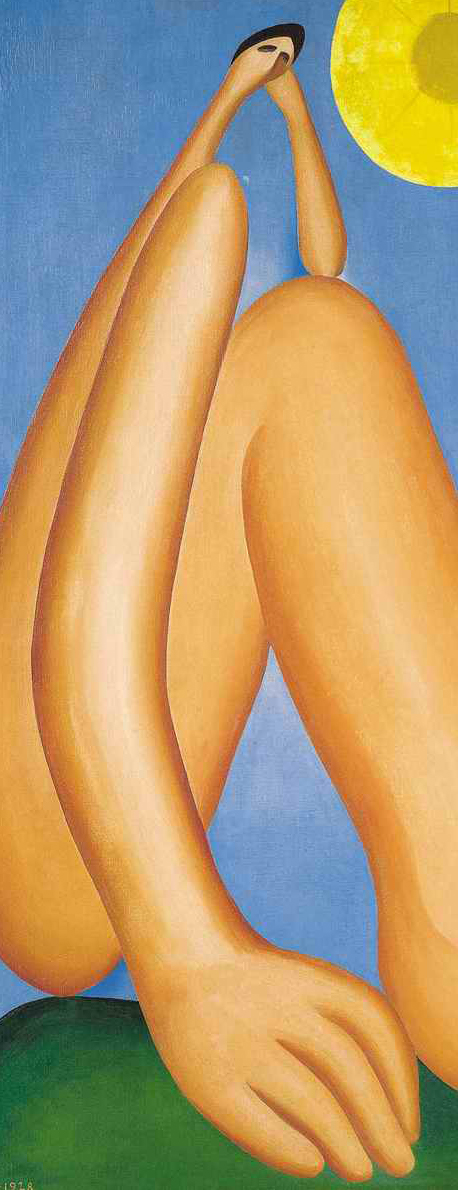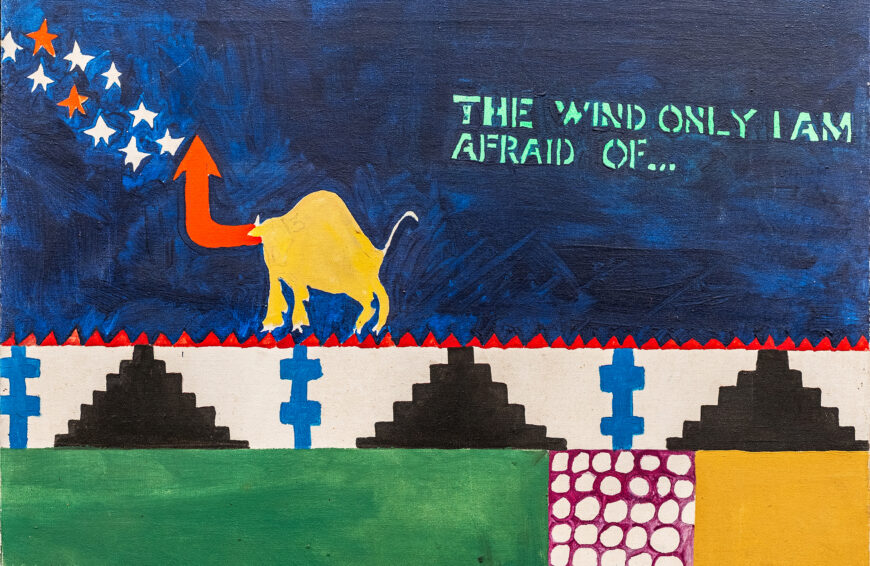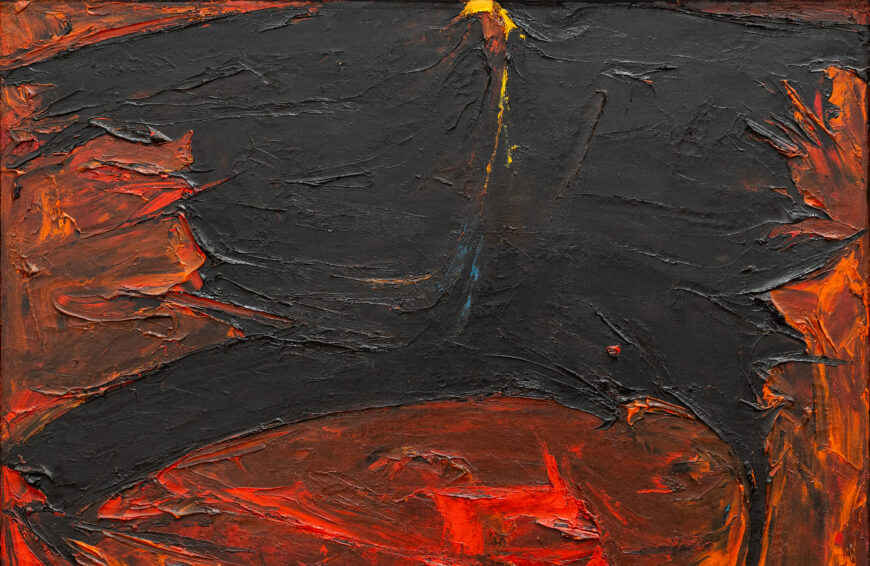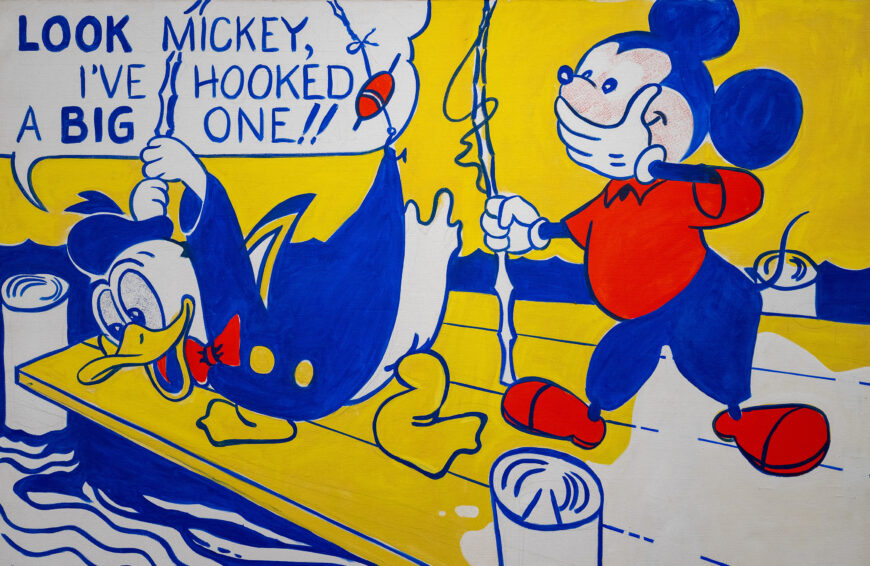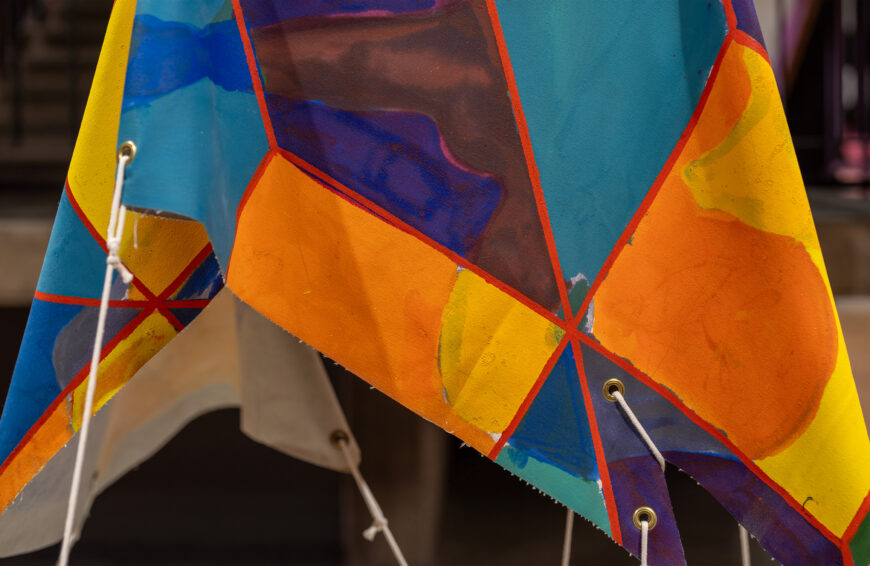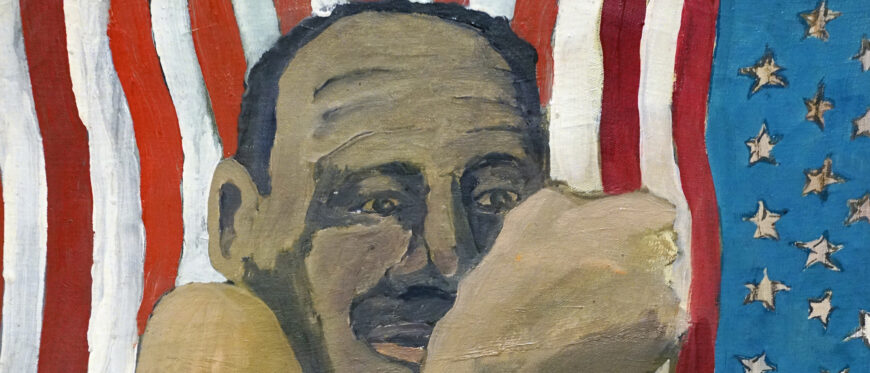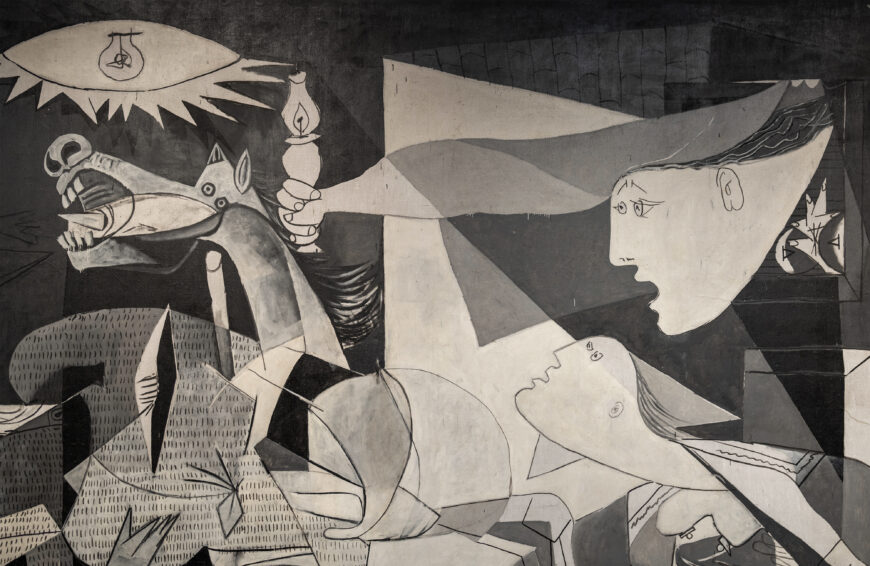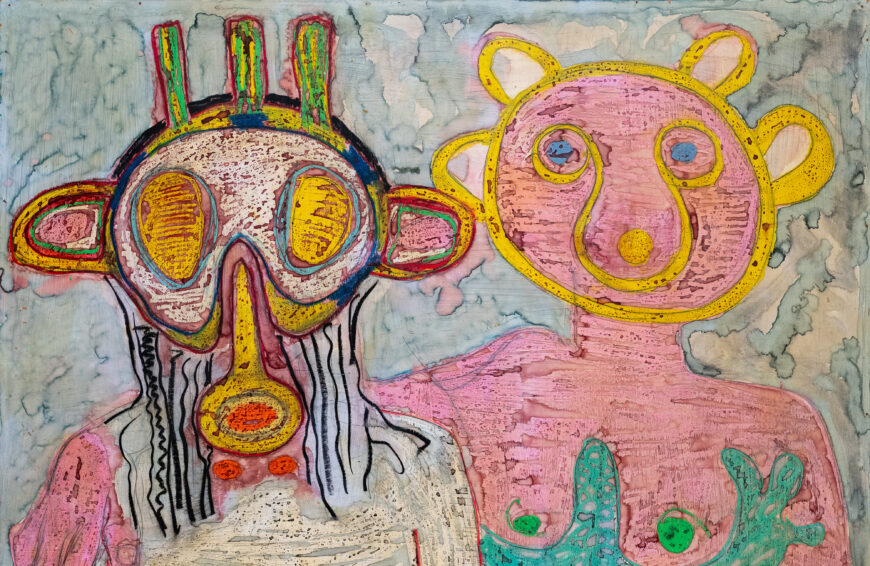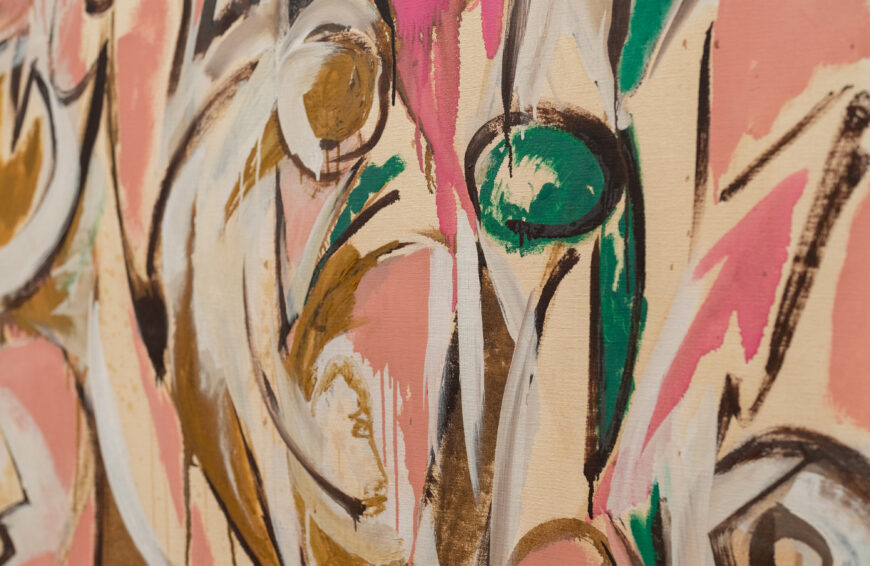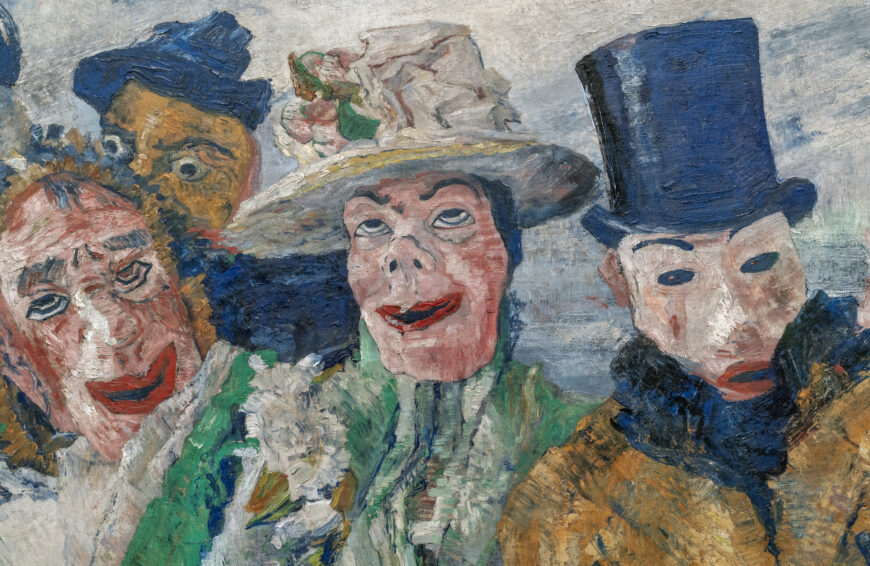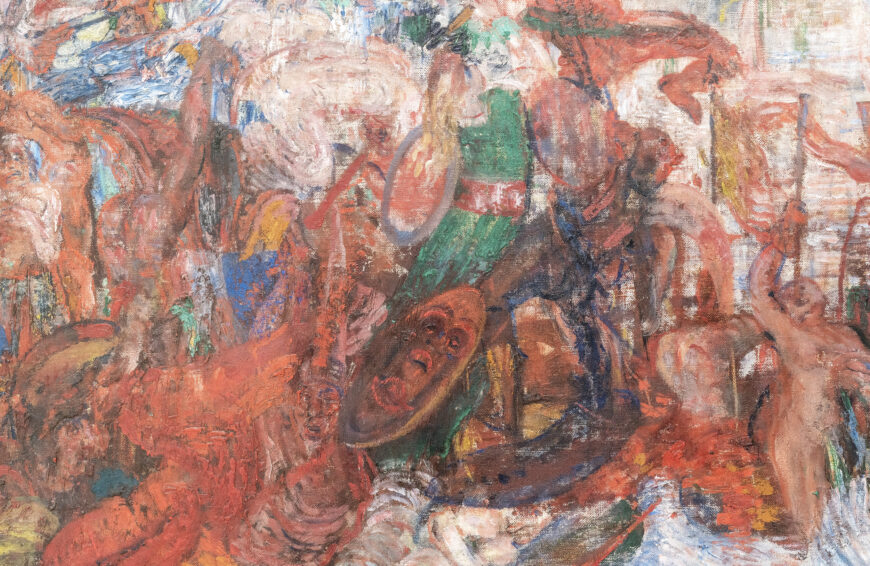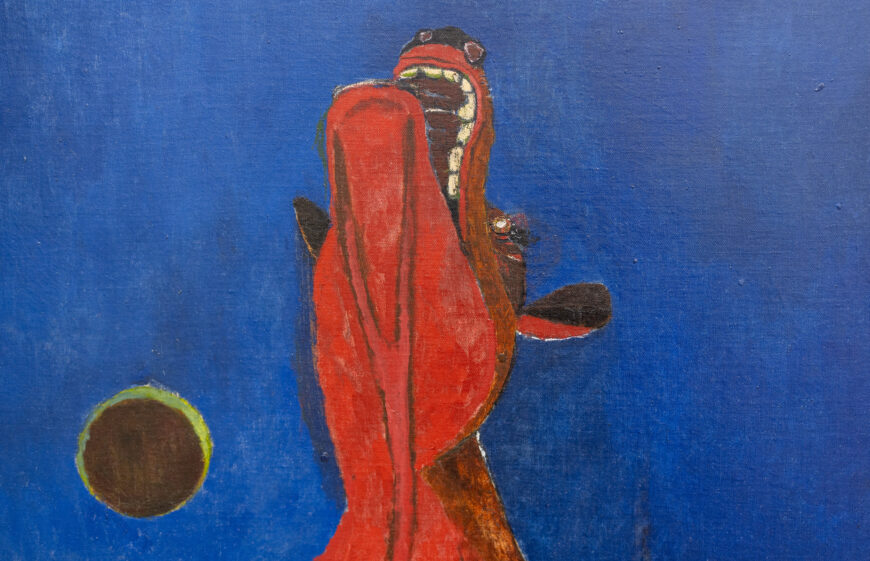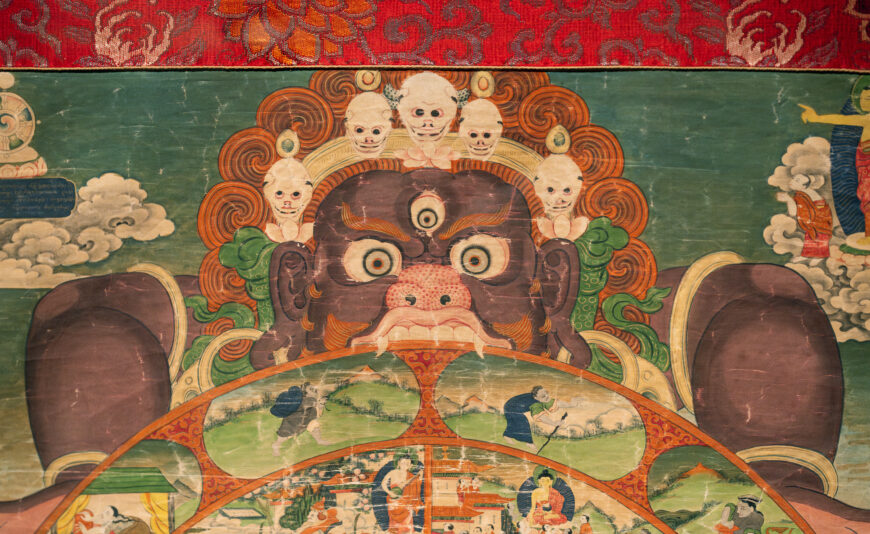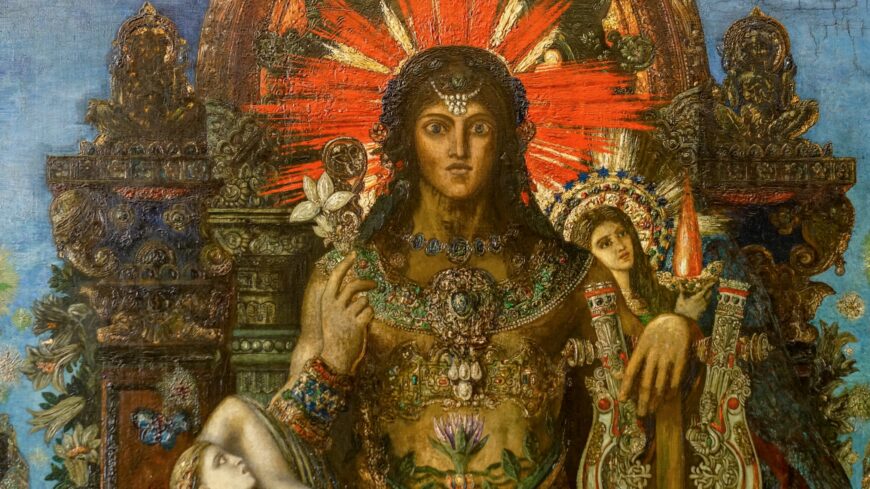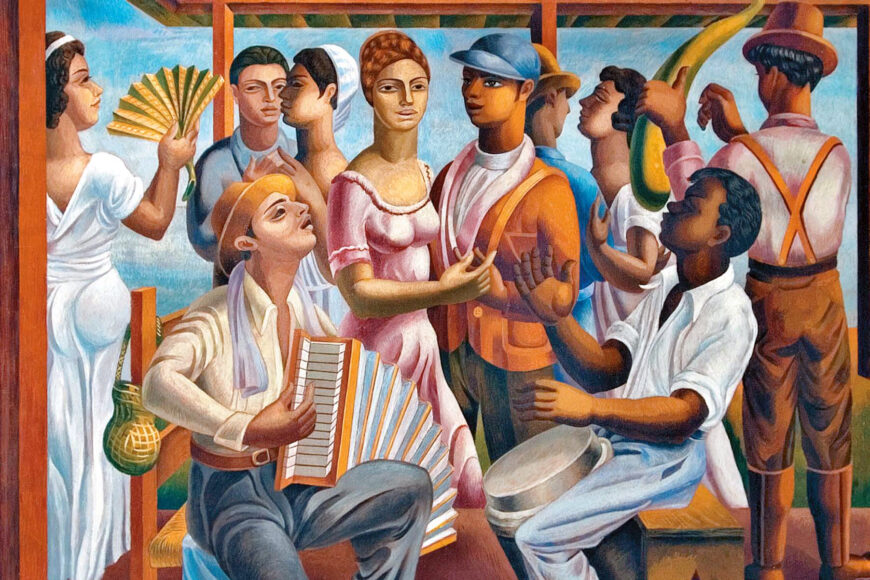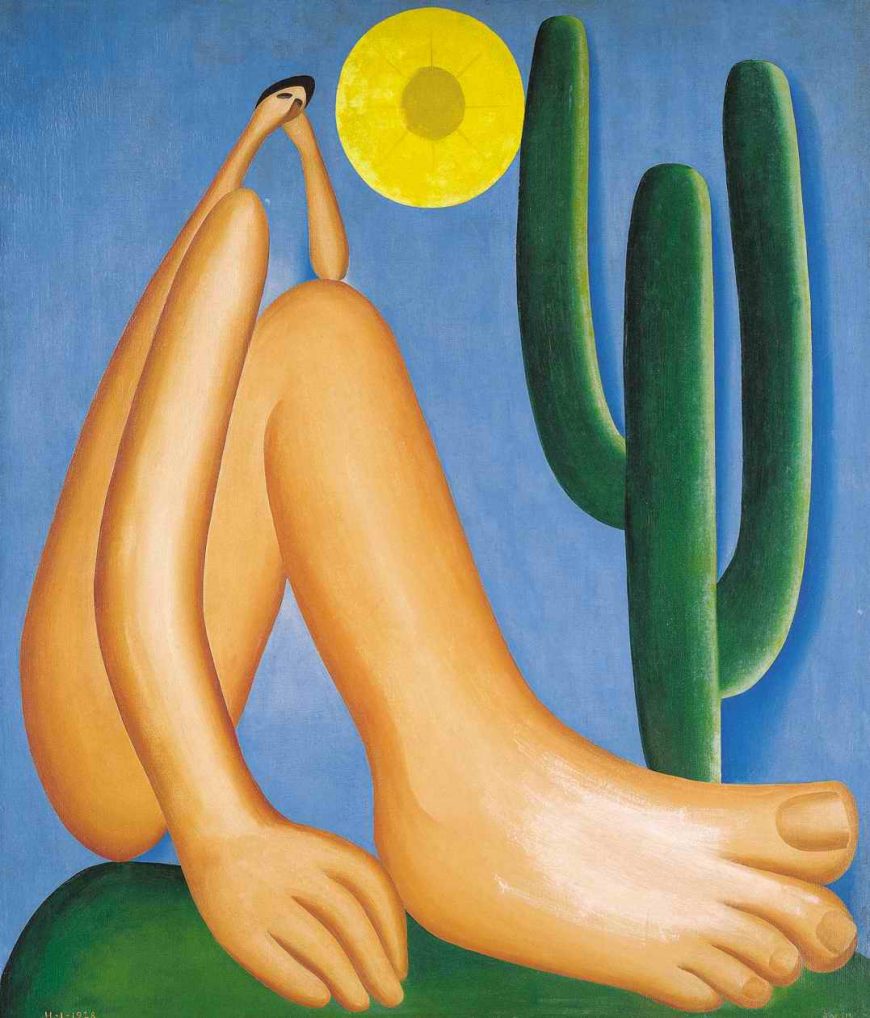
Tarsila do Amaral, Abaporú, 1928, oil on canvas, 85 cm × 73 cm (Museum of Latin American Art, Buenos Aires)
“Man Who Eats”
Brazilian artist Tarsila do Amaral painted Abaporú in her São Paulo studio early in 1928. It depicts a seated nude figure in profile who is of ambiguous age, gender, and race. His bare right foot and hand are firmly planted on the ground. His right knee is bent towards his chest, obscuring any view of a left leg or foot. His left elbow rests on the bent right knee, propping up a very small head. This figure is painted from an extremely low perspective, which causes his body to appear distorted. His right hand and foot are enormous, while his head and upper torso are quite small. The figure appears to be outdoors, sitting on a green surface from which rise a large cactus and a yellow sphere, against a blue background.
Tarsila, as she is commonly known in Brazil, was one of the foremost painters of São Paulo’s modernist movement in the first half of the twentieth century. She is best known for her innovative paintings of the 1920s, when she was actively engaged in the development of a new visual language of Brazilian modernism.
In January of 1928, Tarsila presented Abaporú as a birthday gift to her husband, the writer and modernist theorizer Oswald de Andrade. By their own accounts, de Andrade was fascinated by the painting and proclaimed that he would make a movement around it. Consulting a seventeenth-century dictionary of Tupi-Guarani Indigenous languages written by the Jesuit missionary Antonio Ruiz de Montoya, Tarsila named the painting “aba-poru,” a combination of words that has been roughly translated to “man who eats.”
Abaporú, which is today in the collection of the Museum of Latin American Art in Buenos Aires (MALBA), has become an icon of twentieth-century Brazilian art. This is both because the painting employs unique visual strategies and also because it inspired the writing of one of the most important documents in Brazilian art of the twentieth century: the Manifesto Antropófago (Cannibalist Manifesto, 1928), written by de Andrade.
The Cannibalist Manifesto
With the now famous phrase “Tupi or not tupi, that is the question,” de Andrade opens his Cannibalist Manifesto making a reference to Shakespeare’s Hamlet while asking a question about Brazilian cultural identity. Tupi was one of the largest Indigenous linguistic groups in pre-conquest Brazil, encompassing many tribes that lived along the region’s Atlantic coast. Some were said to practice ritual anthropophagy at times of war; practices that aroused the interest, and often imagination, of early European explorers and colonizers. Sixteenth- and seventeenth-century artists such as Theodor de Bry and Albert Eckhout explored the subject of anthropophagy in fantastical prints and paintings that depicted Indigenous Brazilians consuming or carrying severed limbs.
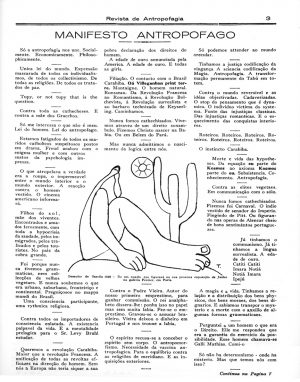
Oswald de Andrade, Manifesto Antropófago (Cannibalist Manifesto), in the Revista de Antropofagia (Journal of Anthropophagy), May 1928
Addressing this colonialist preoccupation with cannibalism, in his manifesto de Andrade employs the concept of anthropophagy as a metaphor for cultural consumption. He argues that artists should be free to cannibalize, or appropriate, the many cultural influences that surrounded them in modern Brazil—be they Indigenous, popular, or foreign. After a process of digestion, or synthesis, he believed this consumption would yield new cultural products, both original and genuinely Brazilian.
The manifesto was published in the first issue of the Revista de Antropofagia (Journal of Antropophagy) in May, 1928. In its original publication, it was illustrated by a line drawing of Tarsila’s Abaporú.
Anthropophagy and Tarsila

Auguste Rodin, The Thinker, bronze, 189 x 98 x 140 cm (Musée Rodin, Paris) (photo: Tammy Lo, CC BY 2.0)
Approaching Tarsila’s painting through de Andrade’s theory reveals how the artist engaged multiple visual sources and reassigned meaning to the forms of European art. For example, art historian Michele Greet has argued that the figure’s posture in Abaporú recalls that of Auguste Rodin’s famous sculpture The Thinker—a large bronze sculpture of a heroic male nude shown in deep contemplation.
As she notes, however, “with its diminutive head, [Abaporú] subverts Rodin’s emphasis on intellectual contemplation.” [1] By distorting the body, Tarsila instead places our focus on the figure’s enlarged limbs that, rather than resting on a pedestal, connect directly to the earth, perhaps suggesting that Abaporú is a creature rooted in Brazilian nature.
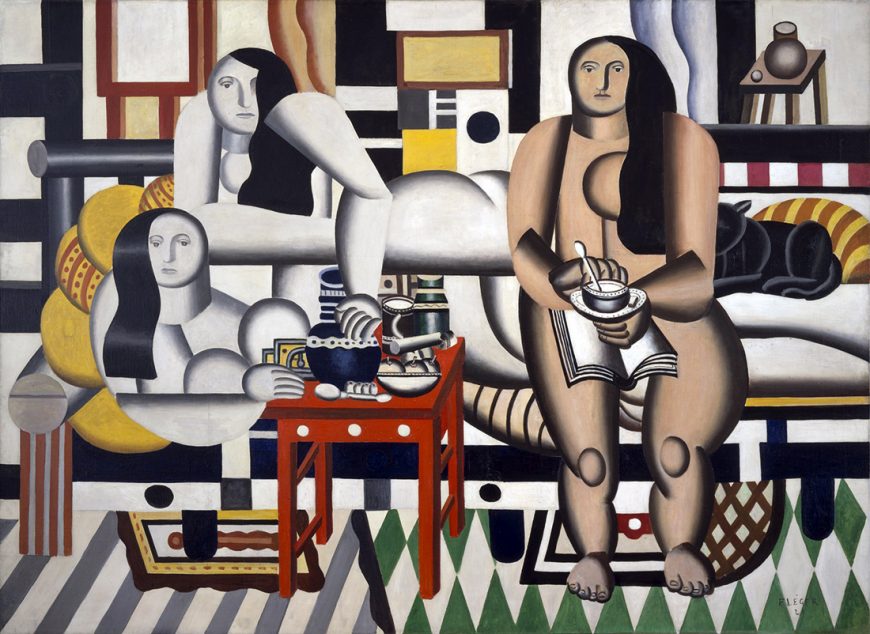
Fernand Léger, Three Women, 1921–22, oil on canvas, 183.5 x 251.5 cm (The Museum of Modern Art, New York)
Some of the techniques Tarsila employed in painting Abaporú were in dialogue with the works of French painter Fernand Léger, with whom she had briefly studied in 1923. Between 1918–1923, what has become known as his “mechanical” period, many of Léger’s paintings presented machine-like forms and tubular figures. In such paintings as Three Women, Léger achieved a sense of volume in the human figures by creating dark shading contouring their rounded bodies. In Abaporú, Tarsila employs a similar technique. The figure’s sinuous body is outlined in darker tones, and Tarsila’s brushstrokes become lightest in color towards the middle of his right arm and foot. While Léger often applied this technique to create sleek, curved bodies in relationship to gridded backgrounds that recall machine-made built environments, Tarsila brings this modernist style into conversation with Brazil’s organic landscapes.
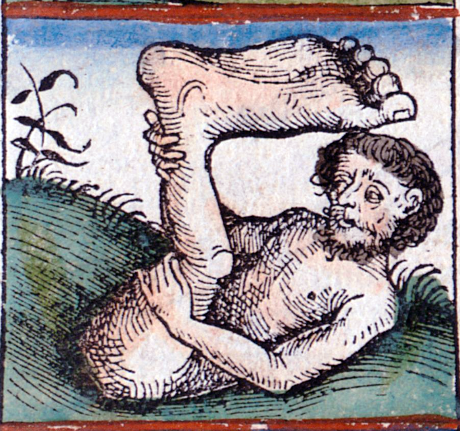
Sciapod (or “unipedes”), woodcut printed in the Nuremberg Chronicle, 1493, p.12 (Bavarian State Library)
Scholars have proposed a number of visual and literary sources Tarsila may have drawn upon in imagining Abaporú’s distorted form. Art historians Carol Damian and Regina Teixeira de Barros, for instance, have suggested that the figure’s enlarged single foot may reference mythological creatures called sciapods. [2] Accounts by ancient Greek authors described sciapods as small men said to live in hot climates, who had only one leg and could use their giant foot to shade themselves from the sun, such as we see represented in a woodcut in the Nuremberg Chronicle.
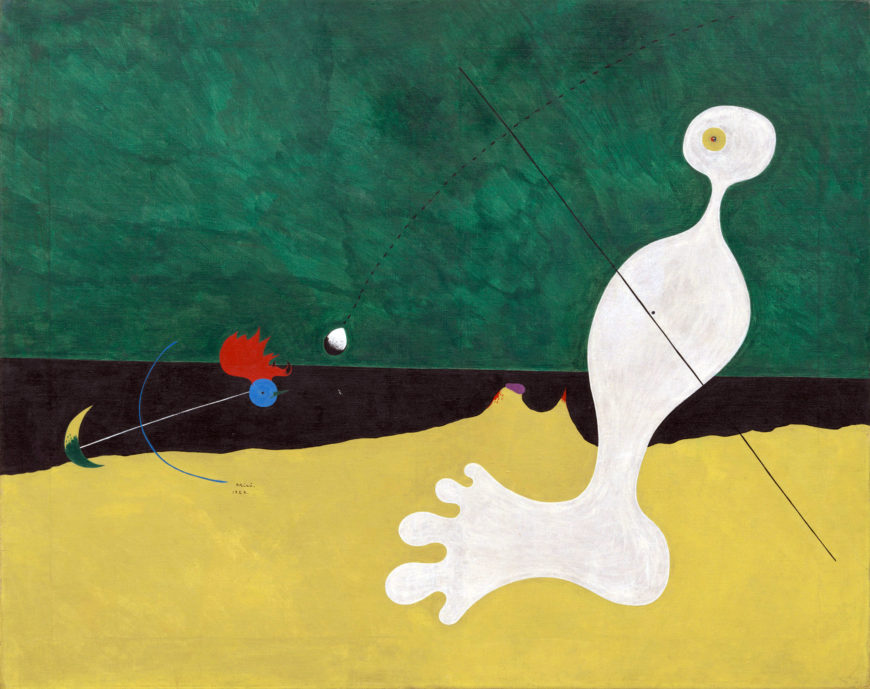
Joan Miró, Person Throwing a Stone at a Bird, 1926, oil on canvas, 73.7 x 92.1 cm (Museum of Modern Art, New York)
Other scholars have noted shared concerns between Tarsila’s image and works by surrealist artists working in Europe in the 1920s. Greet, for example, pointed out the “visual affinity” between Abaporú and Joan Miró’s Person Throwing a Stone at a Bird, painted just two years earlier, in 1926. [3] In both paintings, large swaths of color define the flattened background and foreground of landscapes inhabited by a single abstracted figure, each with a prominent, oversized foot.
These are only a few examples of the ways in which Tarsila applied the strategies of Anthropophagy in painting Abaporú, as she consumed and synthesized a wide network of visual and cultural sources from Brazil and Europe. In doing so, Tarsila established her own knowledge and mastery of international modernist forms while putting forward a wholly original work informed by her perspective as a Brazilian artist.
Abaporú and Brazilian modernism
In the 1920s, artists across Brazil began exploring modernism as a means to reject the strict Academic system that had dominated national artistic production since the early nineteenth century. Artists like Tarsila had travelled to Europe and experienced different avant-garde movements that were already underway there, such as Cubism, Fauvism, and German Expressionism. Convening in large urban centers such as São Paulo, Rio de Janeiro, Belo Horizonte, and Recife, they developed their own modernist languages that significantly altered the landscape of Brazilian art.
The Cannibalist Manifesto aimed to present a strategy for producing artworks that were both original to Brazil and engaged with these broader international discourses. The theories of the Cannibalist Manifesto and the visual strategies that Tarsila employed in Abaporú provide crucial models for us to study the transnational dialogues artists were engaged in, which propelled the development of new forms of art throughout the twentieth century.


